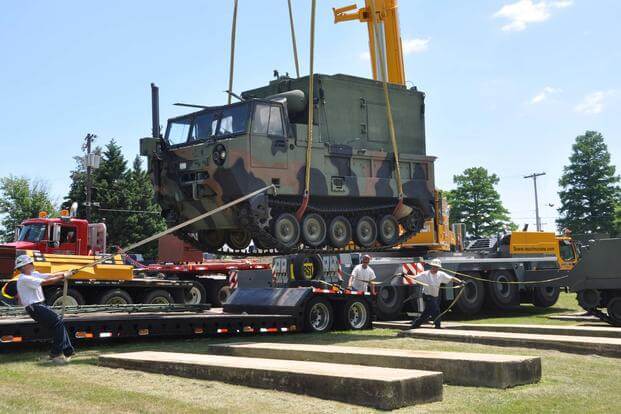The Army is adamant: It needs to close bases to save money, and it needs to do it now. The Air Force may also be open to the idea, but other services are not so sure.
Before the Senate Armed Services Committee's subcommittee on readiness Wednesday, the vice chiefs of the military services made well-worn cases to lawmakers for more money and an end to sequestration budget caps that they say have cut into maintenance and efforts to modernize the military.
And a round of base closure and realignment, or BRAC, may provide a solution for some.
Subcommittee Chairman Sen. Jim Inhofe, a Republican from Oklahoma, asked the officers to provide their perspective on BRAC, warning at the same time that he firmly opposed such a measure.
"I've been through every BRAC round, [six] of them. And without exception, every BRAC round in the first three years costs money," Inhofe said. "If there's ever a time in the history of our military that we can't afford to dilute those dollars … we need to resolve the problems that have been talked about today."
Gen. Daniel Allyn, vice chief of staff for the Army, nonetheless maintained the service's position that it needed a BRAC round, and soon.
"I've been up here now, this is the third year, pleading for additional funding, pleading for the elimination of sequestration and pleading for the stoppage of continuing resolutions. Those have not gone away," he told Inhofe. "We are forced to look internally on where else can we save, and BRAC is an area we know we can save."
Allyn said the Army is saving $1 billion annually from the most recent round of base closures and realignments in 2005, and $2 billion per year from previous rounds dating back to 1988.
"A billion dollars would make a huge difference," he said. "It costs us $30 million to run an installation whether there's a soldier on it or not, so this is real money when you have 154 installations to run around the world."
Gen. Steve Wilson, vice chief of staff for the Air Force, was less committal but indicated the service is open to exploring its options.
"We carry about 25 percent extra capacity on our bases, and I think there's opportunity to do some smart investment going forward," he said. "Right now, we are carrying a backlog of stuff we have to pay for and need to look at opportunities to save."
The Marine Corps, which has the smallest number of bases of the four services, is in a good place with its East and West Coast installations, Assistant Commandant Gen. Glenn Walters said.
And Adm. Bill Moran, vice chief of naval operations, was similarly dismissive of the idea.
"I learned a long time ago that waterfront property is something you should never give away," he said, drawing chuckles from the committee. "We feel we're in pretty good shape."
However, Moran said, the Navy might examine the possibility of conducting its own "micro-BRAC" within installations, demolishing buildings and infrastructure it no longer needs to save funds.
"That would be far more helpful than another round of BRAC," he said.
The question of another BRAC round has hung over the military for years. Last year, Deputy Secretary of Defense Bob Work wrote a letter urging Congress to authorize one, saying the Defense Department as a whole had 22 percent excess capacity on its bases. But BRAC is unpopular for many lawmakers, as it means the loss of jobs and businesses in districts that have bases closed or consolidated.
The most recent defense budget and military construction bills were amended by Congress to explicitly prohibit a BRAC round in 2017. The next defense budget request, for fiscal 2018, is expected to come this spring.
-- Hope Hodge Seck can be reached at hope.seck@military.com. Follow her on Twitter at@HopeSeck.






























